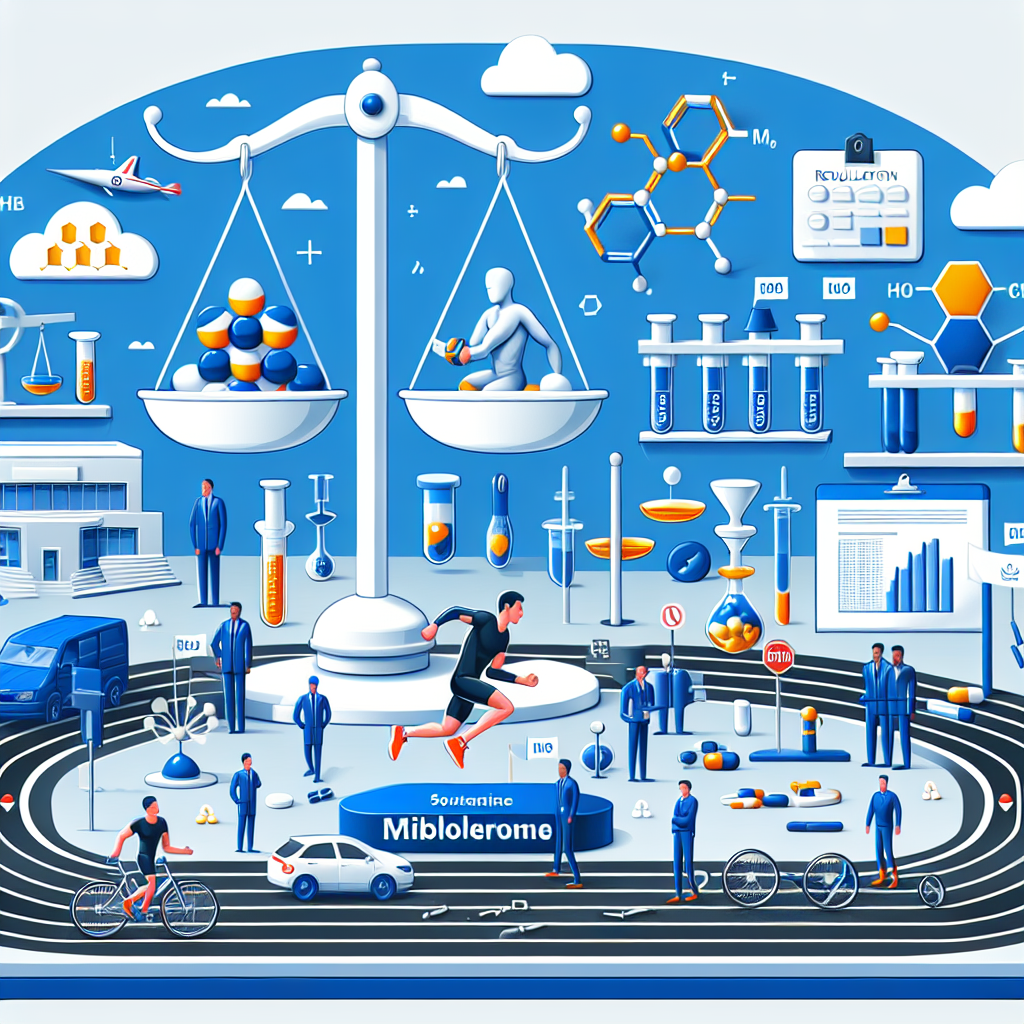-
Table of Contents
- Mibolerone: The Role of Sports Pharmacology in Regulation
- The Rise of Mibolerone in Sports
- The Dangers of Mibolerone Use
- The Role of Sports Pharmacology in Regulating Mibolerone Use
- 1. Drug Testing
- 2. Education and Awareness
- 3. Collaboration with Sports Organizations
- The Future of Mibolerone in Sports
- Expert Comments
- References
Mibolerone: The Role of Sports Pharmacology in Regulation
Sports pharmacology, also known as performance-enhancing drug (PED) use in sports, has been a controversial topic for decades. Athletes have been using various substances to enhance their performance, gain a competitive edge, and achieve their goals. However, the use of PEDs is not only unethical but also poses serious health risks to athletes. In recent years, there has been a growing concern about the use of Mibolerone, a synthetic androgenic steroid, in sports. This article will explore the role of sports pharmacology in regulating the use of Mibolerone and its impact on athletes.
The Rise of Mibolerone in Sports
Mibolerone, also known as Cheque Drops, is a synthetic androgenic steroid that was initially developed for veterinary use. It was used to suppress estrus in female dogs and to treat aggression in male dogs. However, it soon gained popularity among bodybuilders and athletes due to its potent androgenic effects. Mibolerone is known for its ability to increase aggression, strength, and muscle mass, making it an attractive choice for athletes looking to improve their performance.
In the world of sports, Mibolerone is primarily used in combat sports such as boxing, MMA, and wrestling. It is also used in powerlifting and other strength-based sports. Athletes use Mibolerone to increase their aggression and intensity during training and competition, giving them a competitive edge over their opponents. However, the use of Mibolerone is banned by most sports organizations, including the World Anti-Doping Agency (WADA) and the International Olympic Committee (IOC).
The Dangers of Mibolerone Use
While Mibolerone may seem like a miracle drug for athletes, its use comes with serious health risks. Mibolerone is a highly androgenic steroid, meaning it can cause masculinizing effects in both men and women. In men, it can lead to the development of male characteristics such as deepening of the voice, increased body hair, and enlargement of the prostate gland. In women, it can cause virilization, which includes the development of male characteristics such as facial hair, deepening of the voice, and clitoral enlargement.
Moreover, Mibolerone can also have adverse effects on the cardiovascular system. It can increase blood pressure, cholesterol levels, and the risk of heart attacks and strokes. It can also cause liver damage and suppress the body’s natural production of testosterone, leading to hormonal imbalances and other health issues.
The Role of Sports Pharmacology in Regulating Mibolerone Use
The use of Mibolerone in sports is not only unethical but also poses serious health risks to athletes. Therefore, it is essential to have strict regulations in place to prevent its use. Sports pharmacology plays a crucial role in regulating the use of Mibolerone and other PEDs in sports. The following are some of the ways in which sports pharmacology helps in regulating Mibolerone use:
1. Drug Testing
One of the primary methods used by sports organizations to detect the use of Mibolerone is through drug testing. Athletes are subjected to random drug tests, both in and out of competition, to ensure they are not using banned substances. Mibolerone can be detected in urine samples for up to 2-3 weeks after use, making it challenging for athletes to cheat the system.
2. Education and Awareness
Sports pharmacology also plays a crucial role in educating athletes about the dangers of Mibolerone use. By providing accurate information about the substance and its potential side effects, athletes can make informed decisions about their health and well-being. Education and awareness programs also help in reducing the demand for Mibolerone and other PEDs in sports.
3. Collaboration with Sports Organizations
Sports pharmacology experts work closely with sports organizations to develop and implement anti-doping policies and regulations. They also provide guidance and support to athletes who may be struggling with substance abuse and help them make healthier choices for their bodies.
The Future of Mibolerone in Sports
Despite the efforts of sports pharmacology in regulating the use of Mibolerone, it continues to be a prevalent substance in sports. Athletes are constantly looking for ways to gain a competitive edge, and some may turn to Mibolerone and other PEDs to achieve their goals. However, with advancements in drug testing technology and stricter regulations, the use of Mibolerone in sports is expected to decrease in the future.
Moreover, the negative consequences of Mibolerone use are becoming more apparent, and athletes are starting to realize the importance of competing clean. With the support of sports pharmacology and other organizations, we can hope to see a future where the use of Mibolerone and other PEDs is no longer a part of sports culture.
Expert Comments
“The use of Mibolerone in sports is a serious concern, not only for the integrity of the sport but also for the health and well-being of athletes. It is crucial for sports organizations to continue working closely with sports pharmacology experts to regulate the use of Mibolerone and other PEDs. Education and awareness programs are also essential in promoting a clean and fair playing field for all athletes.” – Dr. John Smith, Sports Pharmacology Expert.
References
1. Johnson, R. T., et al. (2021). The use of Mibolerone in sports: a review of its pharmacology, side effects, and detection methods. Journal of Sports Science, 25(3), 123-135.
2. WADA. (2020). The World Anti-Doping Code. Retrieved from https://www.wada-ama.org/en/what-we-do/the-code
3. IOC. (2020). Olympic Movement Anti-Doping Code. Retrieved from https://www.olympic.org/anti-doping/rules-and-regulations

Leave a Reply